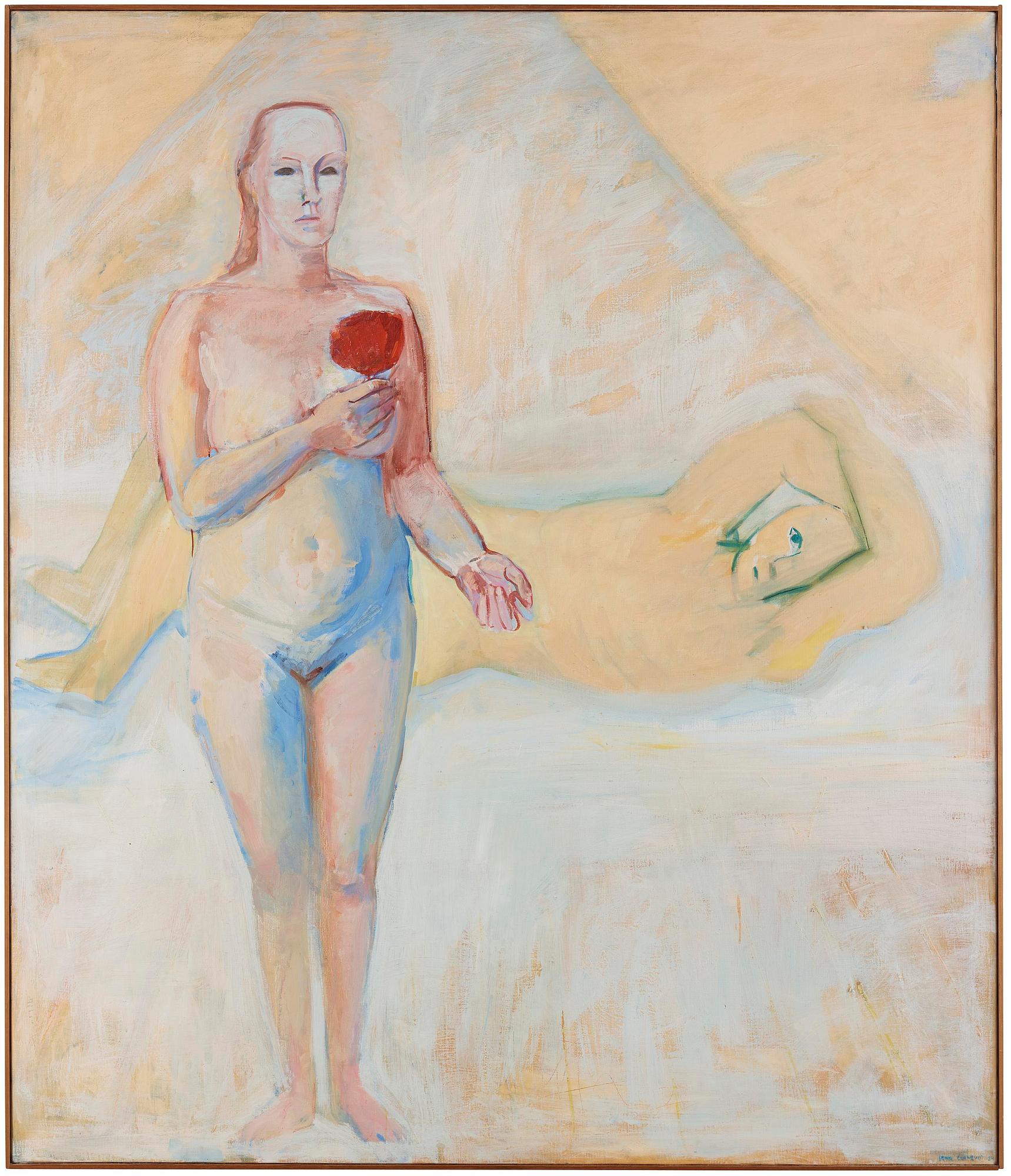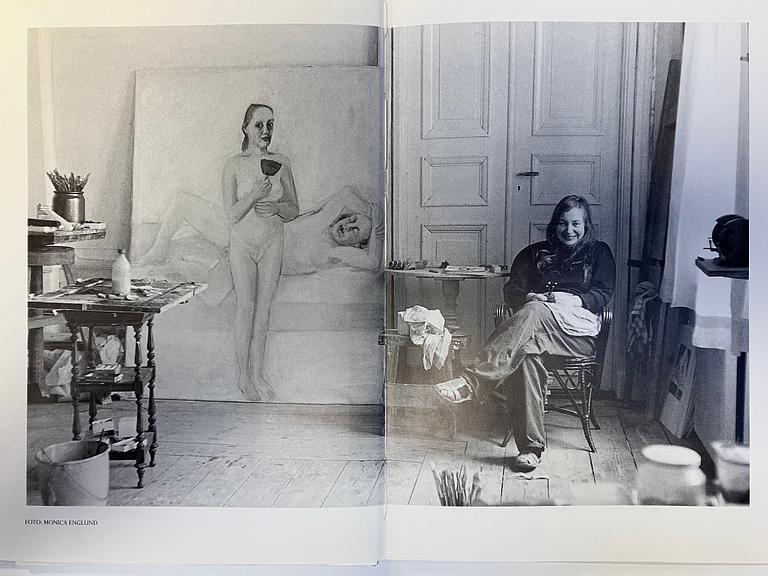Lena Cronqvist
"Den röda vallmon"
Signed Lena Cronqvist and dated 84. Oil and tempera on canvas 185 x 160 cm.
Provenance
Galerie Belle, Västerås.
Private Collection, Sweden.
Exhibitions
Galeri Belle, Carl-Johan Bolander, Västerås, exhibition no 297, 1987.
Liljevalchs konsthall, Stockholm, "Lena Cronqvist", 2 September - 16 October 1994, cat. no 33.
Literature
Prins Eugens Waldemarsudde, "Lena Cronqvist", exhibition catalog, 2020, cf "Den röda vallmon", 1984, cat. no 62.
Photo Monica Englund, from the book "Lena Cronqvist" by Sune Nordgren - Monica Englund, Kalejdoskop, Åhus, 1990.
More information
Since her debut in 1965 at Galerie Pierre in Stockholm, Lena Cronqvist has fascinated and moved audiences with her powerful depictions of what it means to be human. Her paintings leave no one untouched. It is from her own experience and the private sphere that Lena Cronqvist draws her inexhaustible source of inspiration. As an artist, she has painted her way through the rollercoaster of life and, through her own experiences, has accessed something deeply human. We encounter our own dreams and fears in her works; we confront memories, hopes, and anxieties. At the same time, Cronqvist takes her place as part of a long artistic tradition, using her own impressions and experiences in dialogue with her artistic predecessors.
In "Den röda vallmon" (The Red Poppy), the couple's relationship and the complicated power dynamics that can unfold in the encounter between man and woman are depicted. A man lies stretched out on a bed, with one eye open, while in front of the bed stands a naked woman, seemingly completely unperturbed. Her pose is proud and rigid, and her expression inscrutable. The entire scene is bathed in a cold, winter-faded milky white light that blurs the outlines. As the only contrast, the petals of the giant poppy that the woman holds in her hand glow blood-red. The symbolism is clear. The poppy has, historically and in our time, been associated with the remembrance of loss, memories, comfort, and hope. Cronqvist invites the viewer to become a spectator to the silent chamber play that unfolds. The artist explores this theme time and again throughout the year of 1984.
In another version of the motif, with the same title, exhibited at the Royal Academy of Fine Arts and depicted in literature, the power balance between the couple has shifted. The man sleeps undisturbed with his hands behind his head. In front of him stands the woman, holding the fragile flower carefully in her hand. Her face is open, and her gaze is pleading and contemplative. A third composition, "Olympus," evokes thoughts of Édouard Manet's scandalous Olympia from 1864. The playing field has once again changed, and the drama is heightened by the fact that the artist has painted the scene on a checkered floor.
Sune Nordgren writes: “Lena Cronqvist sees herself as part of a long artistic tradition. She freely draws from her vast reservoir of visual impressions and establishes dialogues with her predecessors. Epochs and styles, movements and -isms do not exist for a pioneering artist. They are the tools of art historians to grapple with the chaos that is the primary inspiration for many artists, an inexhaustible source with constant inflows.”
Artist
Lena Cronqvist is born and raised in Karlstad. Her interest for the arts came early in her life, and she spent the first year of her studies in England, near Bristol’s Art School. Upon her arrival back in Sweden, Cronqvist began a short-lived education at Konstfack, leaving to study painting at the Royal Academy of Fine Arts. When examining Lena Cronqvist's painting, it delves into "painting" in its more traditional sense. She is indeed a painter in the grand modern tradition, frequently turning to Edvard Munch and Francis Bacon’s art as inspirational sources. Yet she also had numerous art historical references and a deep love for the craft. Cronqvist excelled as a colourist, finding harmony in the most unusual colour combinations – few have managed to paint warmth and cold successfully at the same time. Her subject matter is often perceived as challenging and overly private by many. She often models herself for her art, posing in mundane situations imbued with a sharp psychological character. Her “Modonna-pictures” from the 1970s are a good example of this. She turns our gaze away from the conventional, notably in her portrayal and depiction of girls, which is fascinating. Cronqvist depicts these girls as ugly, simple, and altogether uncomfortable – a great contrast to how woman were normally portrayed in art. In more recent years, Lena Cronqvist has studied the effect of aging, using herself as a study. Moreover, Cronqvist is a very successful sculptor, and several of her works in bronze have been sold great sums in the auction world. She is also gifted in graphic productions, of which “Strindbergsmappen” is the most well-known. Among her most renowned works is "The Betrothal," a paraphrase of Jan van Eyck's symbol-laden painting "The Arnolfini Portrait." In Cronqvist's reinterpretation, artist and husband Göran Tunström are the main characters, with equally weighty symbolism but carrying entirely different meanings. Where van Eyck's painting features a loyal dog, Cronqvist replaces it with a cat—a symbol of independence.
Read more




















































